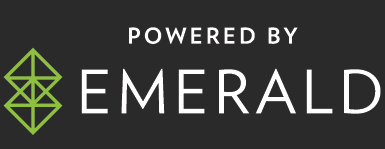By Marie Little, Global Chief Health Officer at Iris
Let’s be honest: for the most part, healthcare marketing doesn’t deliver the impact it could and should. While there are standout pieces which move the dial, the industry generally lags behind its consumer counterparts, often feeling uninspired and formulaic. But why is that? Why, in an industry that is so groundbreaking, does the marketing often feel conventional?
There are many reasons, from a limited appetite for risk to the difficulty of steering the behemothic companies in new directions. To dig deeper, we need to look at how decisions are made in healthcare, and why the usual tactics don’t seem to stick.
Why Traditional Healthcare Marketing Isn’t Working
Healthcare marketing has traditionally leaned heavily on broadcasting brand messages to a wide audience, such as all Oncologists in EU5, hoping something will resonate and opinions change. This blunt approach might have worked in an era of limited options, but those days are long gone.
Today, people are more connected than ever. They have endless sources of information at their fingertips and are influenced by their peers far more than by brand messages. We live in an era of heightened expectations—where execution quality, relevance, personalisation, and entertainment value are critical. In this environment, traditional healthcare marketing struggles to make an impact.
Data underscores this: 82% of healthcare professionals (HCPs) trust their peers the most for product recommendations, and a staggering 60% can’t recall any healthcare marketing they’ve encountered. To put it bluntly, if your marketing is forgettable, it’s failing. And in a time when many businesses are seeking growth with lean budgets, that’s simply wasteful.
Moving Toward Participation Marketing
Healthcare marketing lags behind for a few key reasons. First, there’s an overwhelming tendency to play it safe. With a highly regulated industry, creativity is often seen as risky rather than an opportunity. As a result, brands lean on messaging that ticks all the compliance boxes but fails to engage. But playing it safe is only safe if it achieves the mission of standing out.
Second, there’s a belief that healthcare is different, that the tactics used in consumer marketing won’t translate. This couldn’t be further from the truth. Healthcare marketers have an opportunity to learn from what works in the consumer space—if they’re willing to take the leap.
The key is participation: brands don’t influence people—people do. The best way to mobilise people is by ensuring your brand is an active participant in the ecosystem of stakeholders and conversations that already exist.
Take the diagnostics space, where purchasing and treatment decisions can be influenced by a network of up to 17 different stakeholders. This isn’t a simple linear process; it’s a complex web of peer influence and timely information. To succeed here, brands need to actively engage in these conversations, rather than passively broadcasting. Truly authentic engagement is driven by understanding the people we want to reach. We now have access to more audience insights and data points than ever. The trick is to interweave them into our marketing and use them to underpin all activity.
This isn’t just theory. The Iris Participation Brand Index shows that insurgent brands are gaining traction by doing exactly this. They’re not just making noise; they’re making an impact by being part of the conversation.
Looking Ahead to a New Era of Healthcare Marketing
So, where does this leave healthcare marketing? It’s clear that traditional methods aren’t delivering. It’s time to shift towards participatory, people-powered marketing that genuinely connects with audiences.
Yes, the healthcare industry is heavily regulated and complex, with multiple stakeholders—but these are challenges to drive creative thinking, not reasons to play it safe.
Healthcare marketing can be as impactful as any other sector. We’ve seen firsthand the results when brands embrace a participation-focused approach. Healthcare brands willing to step out of their comfort zone are seeing real benefits.
As you plan for 2025 and beyond, ask yourself: could our marketing work harder? It’s time to try something different. After all, healthcare marketing doesn’t have to be mediocre; it’s only mediocre if we allow it to be.
So, the real question isn’t whether healthcare marketing misses the mark—it’s what are we going to do about it? Because none of us chose this path to blend into the background.




